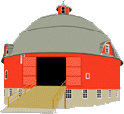SEGMENT: ENVIRONMENT
David Seibert>LPL Walk & Talk Interviews>Seibert, Section 1
| <-Previous Segment | Next Segment-> |
- ENVIRONMENT
- Each paddock has around 70 acres. Fertility is important when determining where to graze. The types of forage is also important. You want a combination of grasses and legumes. Managing the grass is important because it keeps the grass more nutritous. Shiny grass is fescue, which is good in wet weather. There are two different kinds of fences
- LIVESTOCK
- Calves put on weight very quickly. It weens easiily when the feeder is out in the open. Mineral feeders are used to keep the cattle healthy. The water tank goes down into the ground six to eight feet into the water line. This keeps the water from freezing. When the cows drink, they push down a ball that is also used to prevent the water from freezing. If cattle has to walk miles to get water, their grazing won't be uniform. On Dave's farm, they try to keep the cattle within 800 feet of water. Livestock production is better in Illinois than in New Mexico or Arizona because they have better access to water.
